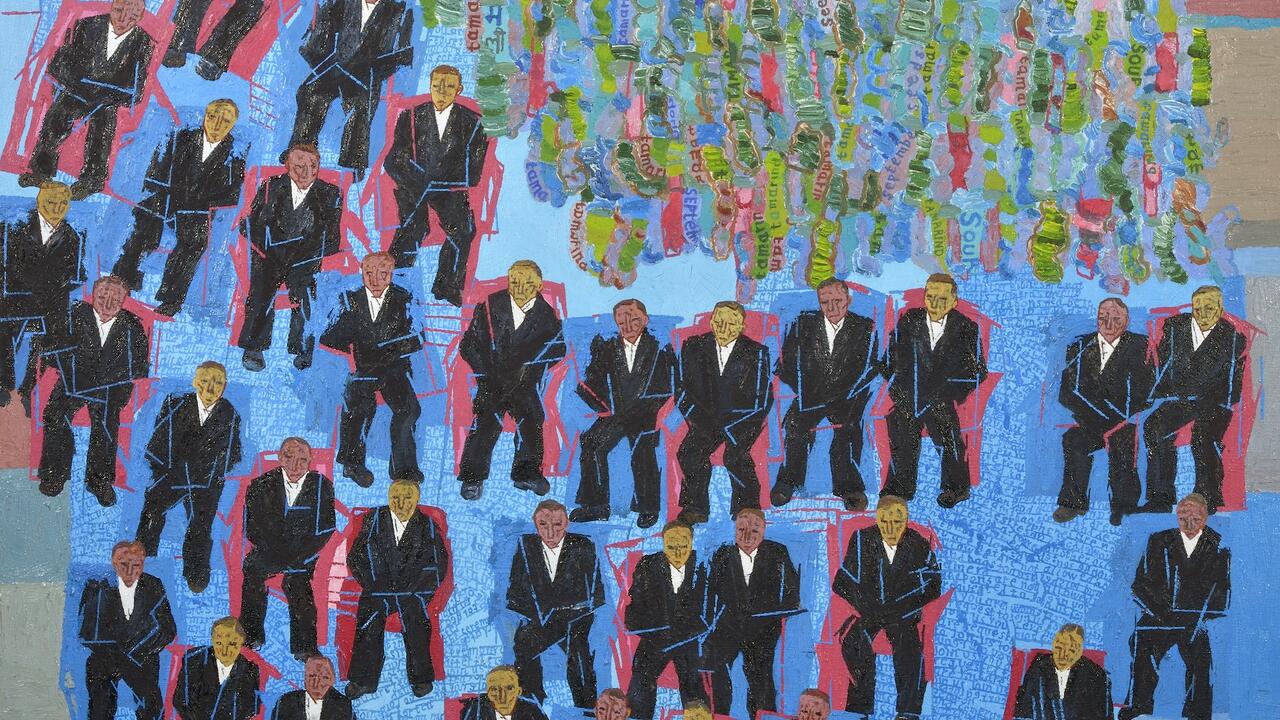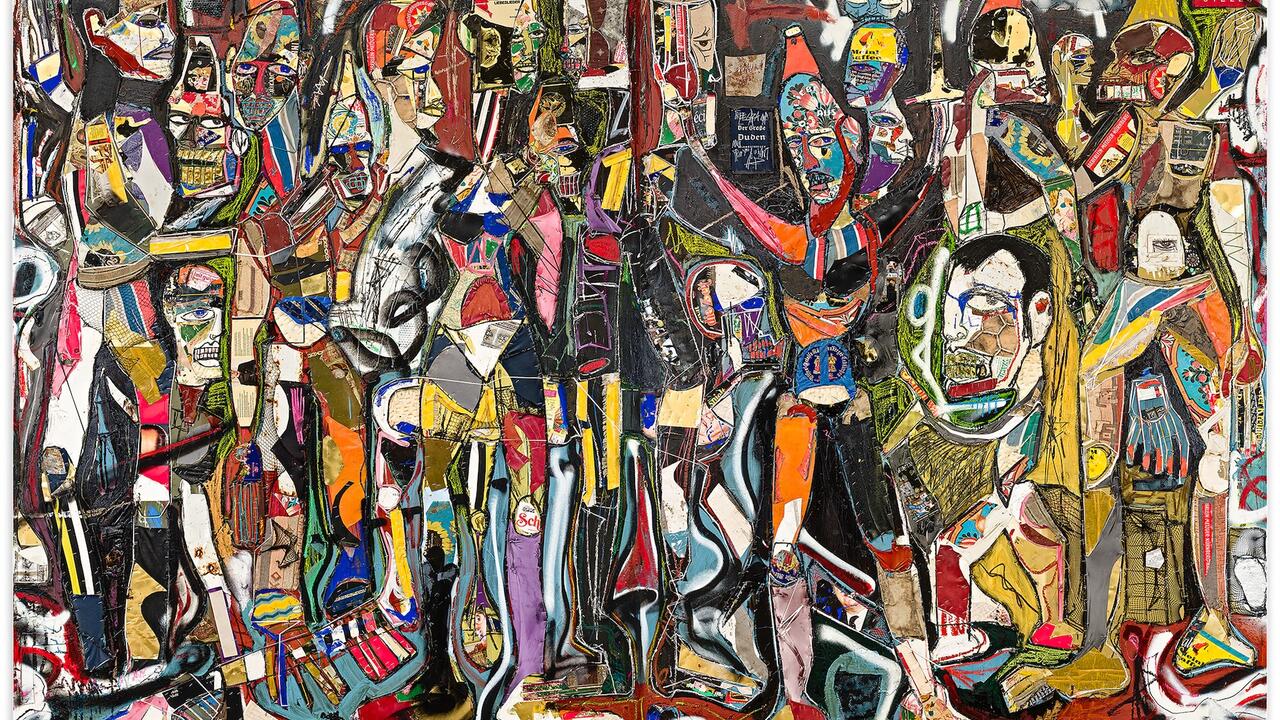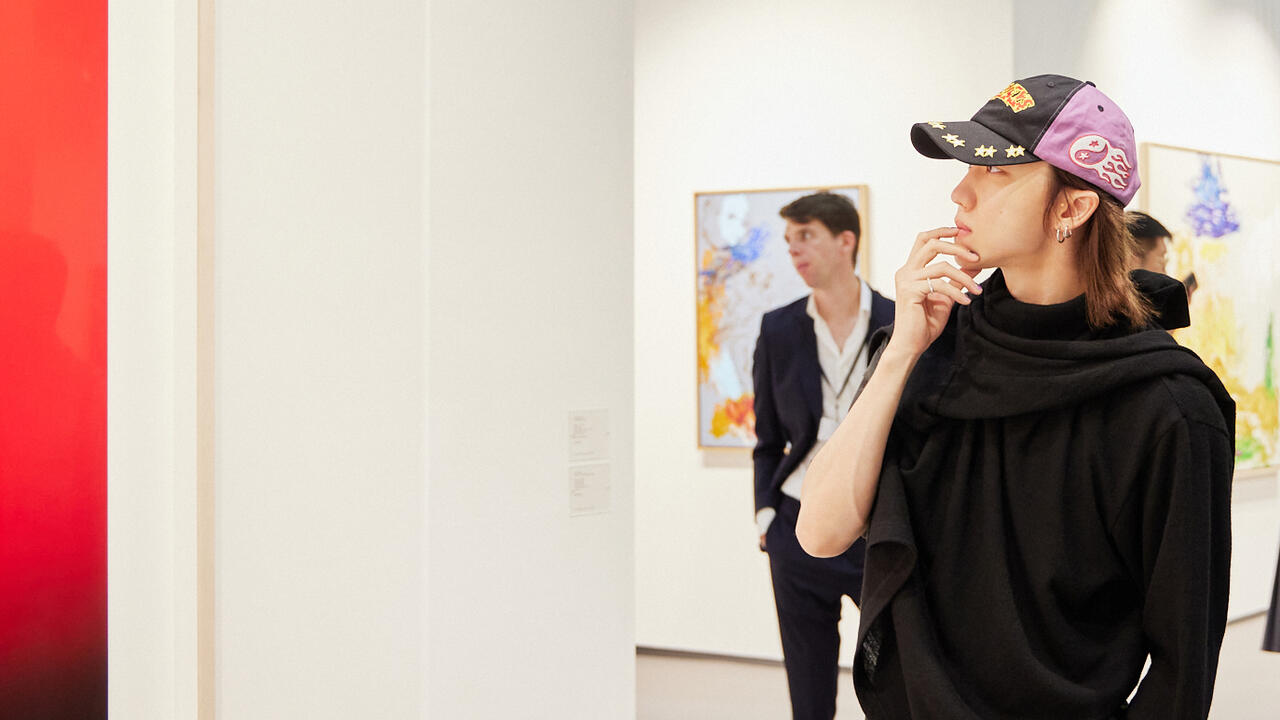Prabhavathi Meppayil
Pace Gallery, London, UK
Pace Gallery, London, UK

A three-panel work, Untitled – CU 3 (2011), installed in the Arsenale as part of ‘The Encyclopedic Palace’ at last year’s Venice Biennale, discreetly announced Prabhavathi Meppayil to an international audience. Before being included in Massimiliano Gioni’s compendious exhibition, the Bangalore-based Indian artist’s work had been seen globally only in the context of a few group exhibitions of Indian Modern and contemporary art. The art critic Benjamin H.D. Buchloh, subsequently reflecting on the biennale, declared Meppayil’s work to be amongst the ‘real discoveries’ of Gioni’s presentation.
Buchloh’s enthusiasm continues in an essay for the catalogue that accompanied ‘nine seventeen’, Meppayil’s recent show at Pace Gallery, and her first solo exhibition in the UK. He notes that, for most Westerners, the immediate reference points for Meppayil’s paintings and sculptures would be ‘postwar reductivist practices’ – ranging from European and Latin American Neo-Concretism to American Post-Minimalist abstractions. However, he hopes for a finer and more nuanced appreciation for the work, which would go beyond basic visual comparisons and ‘recognize the historical and geopolitical specificity’ informing Meppayil’s approach.
On display in London was a selection of work in different sizes dating from 2009 to 2013. All of Meppayil’s work is done on wooden board, and while the panels appear monochromatic, the surfaces have been layered following a traditional gesso process, with each layer taking three to four hours to dry. Meppayil usually builds up around 15 layers. After the gesso has dried, she draws lines across it with a needle and ruler, drilling holes into which she then embeds stretched uncoated copper or gold wire. Once this is complete, Meppayil will again apply gesso onto the surface, before finally sanding and polishing it by hand. In the resulting compositions, various arrangements of parallel bands of lines emerge but with a certain unpredictability – some of the wire inserts may have vanished, while others remain visible. In three extraordinary wire-free works – untitled series – 2 (2009) and untitled series – 3 (2010), which bookended the Pace presentation; and 1 & 5 (2009–10), a diptych that hung in the middle room – Meppayil made a series of microscopic horizontal and vertical indents across the entire planes of the gesso using a set of tiny steel tools called thinnam. These instruments, which are generally used by goldsmiths to make patterns on bangles, were borrowed from her family’s long-established workshop in Bangalore.
Time- and labour- intensive, Meppayil’s is an artisanal practice executed in a contemporary South Asian context, which is also in dialogue with aspects of Western Modernism from the 1950s and ’60s (namely a reduced colour palette and visual consideration of the grid). However, there is an evident incompatibility between the progressive and transformative ideals that charged late Modernism and the neoliberal capitalism that drives India today. Meppayil recognizes this; her work is a knowing engagement with these conflicting ethics and aesthetics.
Caution should be exercised when attempting to relate Meppayil’s work to other non-objective art practices from India. For instance, an easy association could be made with the black and white line drawings of Nasreen Mohamedi, an Indian Modern artist whose work was little known internationally at the time of her death in 1990, and was the subject of an elegant retrospective at Tate Liverpool that coincided with Meppayil’s Pace show. While the two share minimal visual languages, Mohamedi’s is an abstraction born from ink and pencil on paper and, as such, does not have the materiality of Meppayil’s built up layers, which bear very tangible traces of presence.
This was perhaps most striking in the work untitled series – 1 (2010), comprised of nine wooden panels. Walking along the row of works at a measured pace, taking in the individual internal scales of each, the material condition of Meppayil’s practice became palpable. The copper wires embedded in each panel have started to oxidize, turning blue, green and other cupric shades. This indication of the temporal dimension to Meppayil’s method of work is subtly apprehended, revealing itself almost covertly. It is deeply satisfying to behold these changes and transformations, which are so subtle that they are only evident when seen in person. At a moment when it seems that more and more art is being made for digital circulation and distribution, Meppayil’s gesso panels, in all their quietness, enact a form of visual resistance that demands a physical encounter and a different temporality of experience.






















